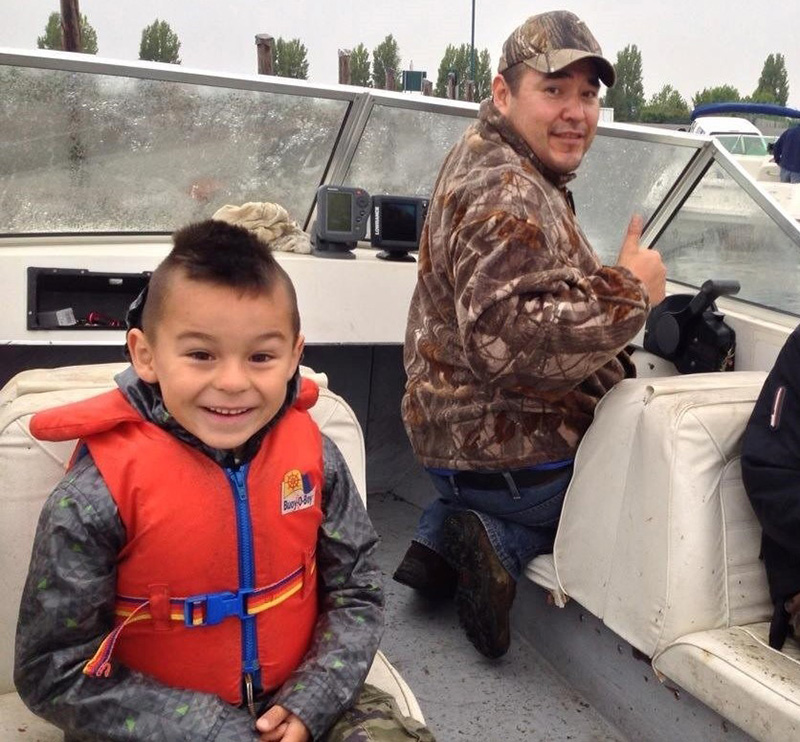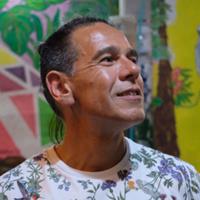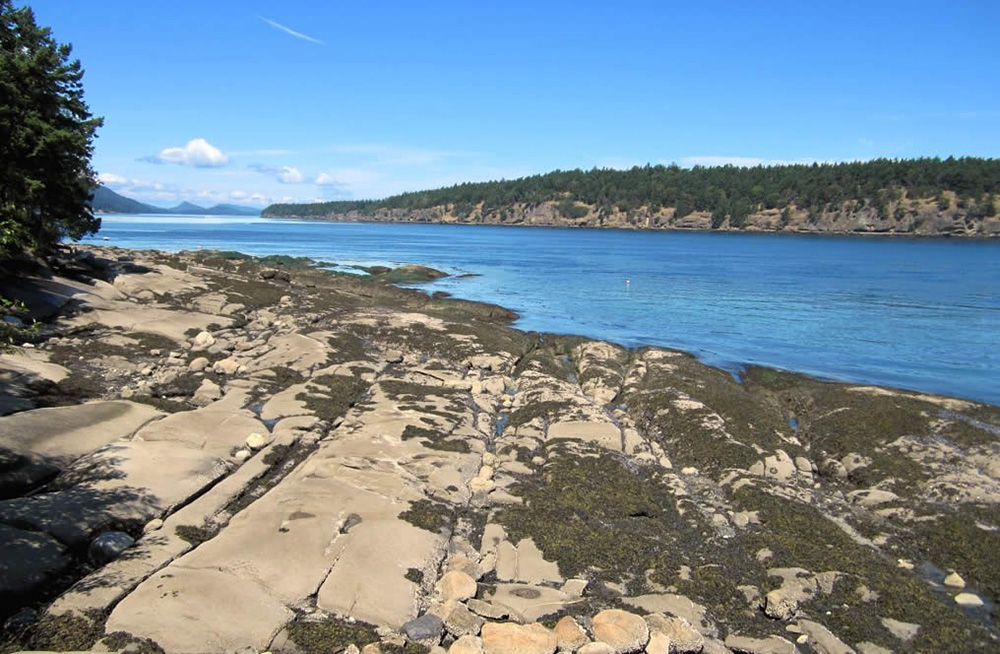[Editor’s note: This essay is excerpted with permission from the multi-authored collection 'Love of the Salish Sea Islands' from Mother Tongue Publishing, 2019.]
There is a tiny island shouting distance from Saturna in the Salish Sea that has a hold on me. Hardly more than an anvil-shaped outcrop, it has steep cliffs with forested high ground on the long edges, a rocky beach on one end and a natural harbour with tidal mud flats on the other. The middle part of the island is all marsh. That is all there is to it, save for the play of light and mist that rises so exquisitely when the sun shines down on the wet ground. And wildlife too, plenty of deer and hundreds of geese. Naturally, it is a small speck of perfection.
No human presence remains on the island, or rather, there are only remnants, an old house and collapsing barn abandoned a century ago. When I am there, amidst the collapsed settlement and nature taking back her rock, I feel fully immersed in an unfolding, uncertain and ancient future.
My connection to the island started with an invitation from my friend Xumtholt, a scholar, hunter and fisherman from the Tsawout First Nation. Xumtholt and others from the W̱SÁNEĆ Nation hunt deer on the island, as is their birthright and pleasure. The first time I went with him, I asked about the name of the island, and he told me that it is called Tumbo Island on the map. I let that word roll around in my head while we slowly made our way in his small boat through the fog, past all the islands in the channel between Sidney and the open part of the strait.
When we approached our island and landed on the shore, I jumped out of the boat and walked up the small incline leading from the beach and took in the view. Struck by the perfection of the little treasure, my mind couldn’t accept that name: Tumbo. It sounded too trivial for such a special place. His boat anchored on the beach, Xumtholt and I talked about this as he took me over to a Parks Canada sign that had been placed a short ways inland. There we read that the walking path that traversed the island had been named the Temosen Trail.
No explanation for the name of the trail was given. We didn’t need any.
Temosen is the name held by a respected elder in the W̱SÁNEĆ Nation, a master carver, Xumtholt’s uncle and my good friend. Names are sacred for Indigenous People, and it is not my right to share the meaning of the man’s name or talk about it. But, it is most definitely ancient, certainly dignified and obviously connected through a thick storyline to the island. Xumtholt and I, in that moment, renamed the tiny island Temosen Island, a befitting name. With Xumtholt’s sharing of his nation’s heritage, the island has, gratefully for me, become a place where I can feel connected with the ancestral spirits that are grounded in the land and pulsing through the waters of this territory.
There is usually no one else on the island, and we have it to ourselves. The few people we have occasionally run into have seemed nervous about being alone on an island with us and haven’t stayed long or just got back in their boat and left for having caught sight of us — brown guys with bows and arrows! We like it like that.
I’ve thought about it a lot on the boat rides to and from Temosen, and I think we go to the island so we can experience being Indigenous in a place where there are no constant and overwhelming human-formed reminders of how very difficult it is to be Indigenous. We’re drawn to the idea of it as a space where we can transgress and escape the regulated feeling of the places we have to live our lives every other day, free to live out in a small way our own imagined Indigenous selves.

For Xumtholt, me and my son, being Indigenous means walking the land hunting. One late summer afternoon, we set out on the footpath that leads from the beach. I tell my son that we are Natives doing Native things on Native land, and that I am proud and grateful to be here with him and Xumtholt because this time and place and togetherness is a gift. We walk quietly along the path to a place Xumtholt thinks we will see deer, and he is right. He raises his fist, and we stop and scan the field of tall grass ahead. In the shade of a willow, we can see ears flicking just above the tops of the grass. We look at each other and smile and then crouch down to shield ourselves from their view. The deer sense us. They stand, look our way, and in a heartbeat, two does bound away from us on a trail that runs along the edge of the marsh. Xumtholt takes the low route, and I and my son double-back on the trail. We are not long on the trail before my son spots one of the deer in a small thicket and tells me so. I don’t see it myself, but I trust his eyes and tell him to sit on the trail and wait and watch for movement. I turn back toward the bush and approach it carefully, knowing that a wild animal is in there, poised to escape, and just waiting to sense laxness in me. I am ten yards away from the thicket, crouching, and still don’t see anything moving. Then the deer jumps out of the bush high right in front of me, and though my heart is in my throat, when it hits the ground, I shoot it dead.
We are blessed.
Xumtholt rejoins us on the higher ground, and there are smiles and handshakes and respect to the spirit of the deer. As we gut and skin and butcher the animal and carry the meat back to the beach, my son listens to me and Xumtholt tell stories about hunters who have come here before us and of our own hunts on this island and in other places. And the beauty of it all is that we are all on our own: Natives doing something Native on Native land, asking no one’s permission and answering only to the spirits of the land and the ancestral teachings of the long line of hunters who have come before us. My son is now part of that tradition himself, and he’s become a resurgent Indigenous presence on the island.
Being on Temosen is powerful salve on the soul scarring caused by the disconnection from nature and each other that marks the everyday existence we all endure. It is medicine, and our visits are a kind of ritual of reclaiming, renaming and represencing to strengthen our spirits so we don’t completely lose ourselves under the constant pressure of whiteness bearing down on us.
Hunting on Temosen is necessary to my son and me as a form of resistance against the loss we feel and must always carry inside, a result of the cutting of crucial connections that root us in place and tie us to land. Our relationship with the W̱SÁNEĆ through Xumtholt and Temosen, their sharing of teachings and rites, has given us self-awareness as Indigenous People in relation to them and this place and is helping me show my son pathways to meaning and purpose as
a respectful human being living on the edge of the Salish Sea. ![]()
Read more: Indigenous, Environment
















Tyee Commenting Guidelines
Comments that violate guidelines risk being deleted, and violations may result in a temporary or permanent user ban. Maintain the spirit of good conversation to stay in the discussion.
*Please note The Tyee is not a forum for spreading misinformation about COVID-19, denying its existence or minimizing its risk to public health.
Do:
Do not: